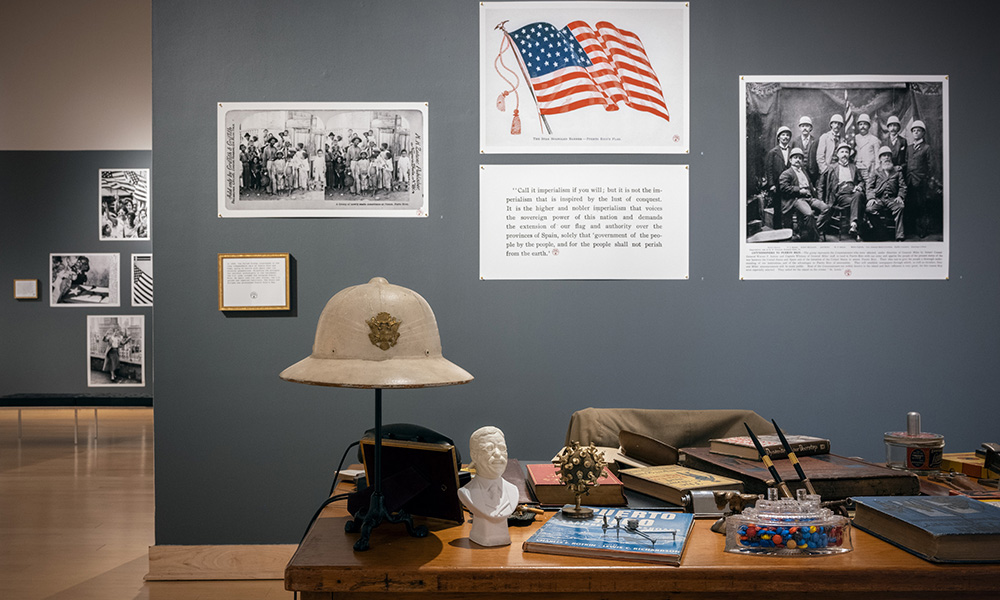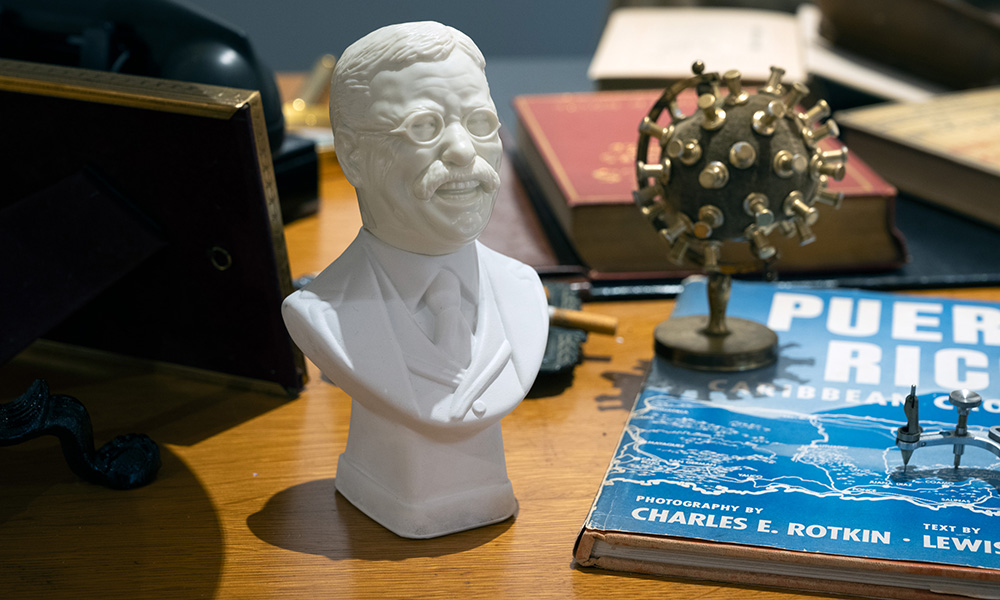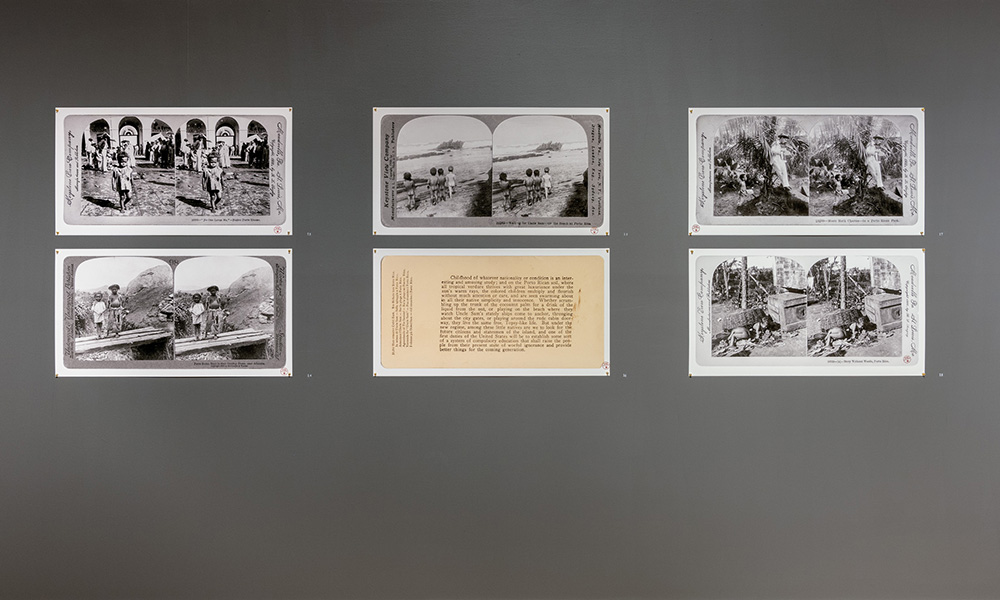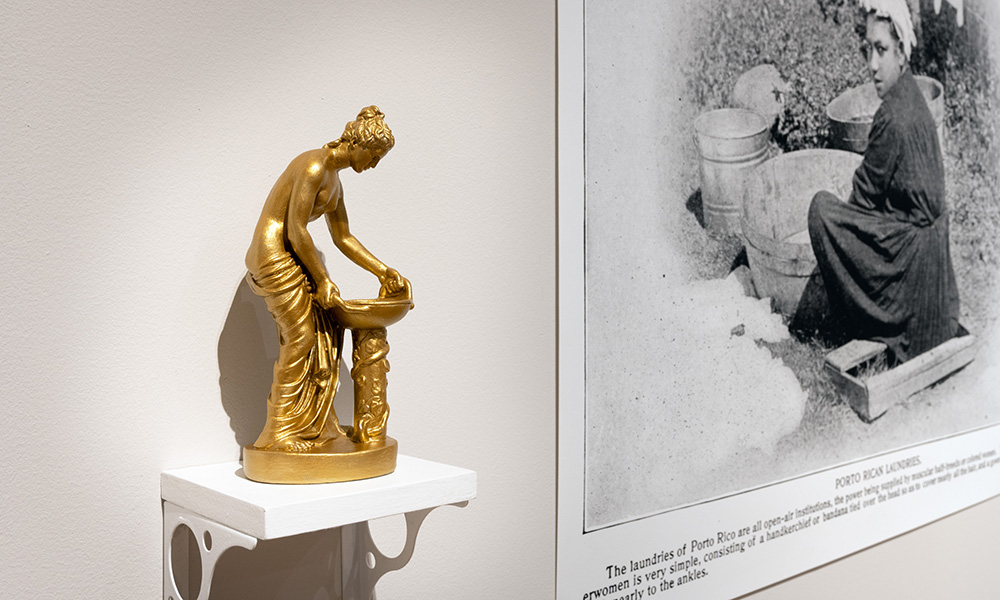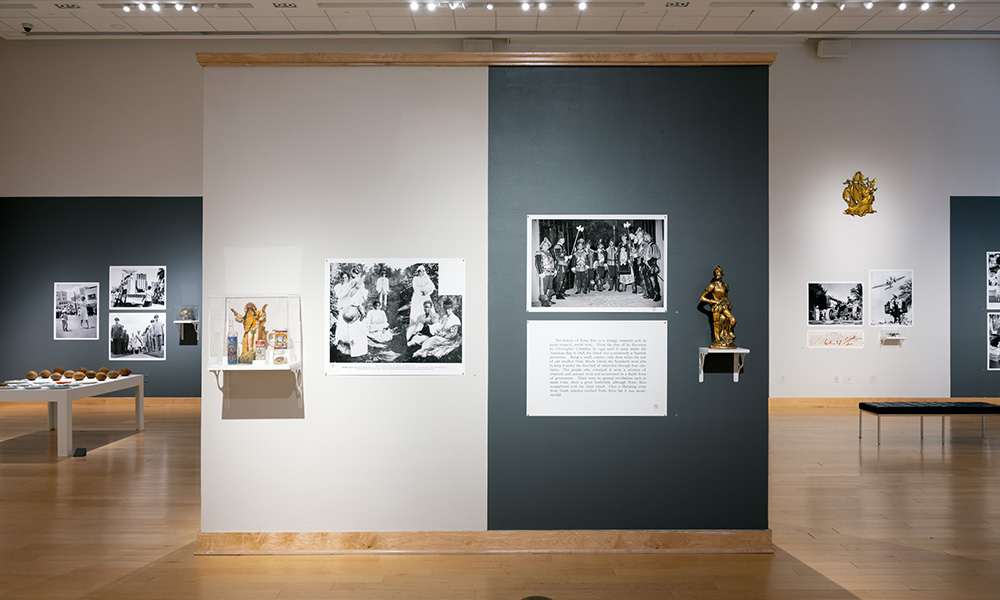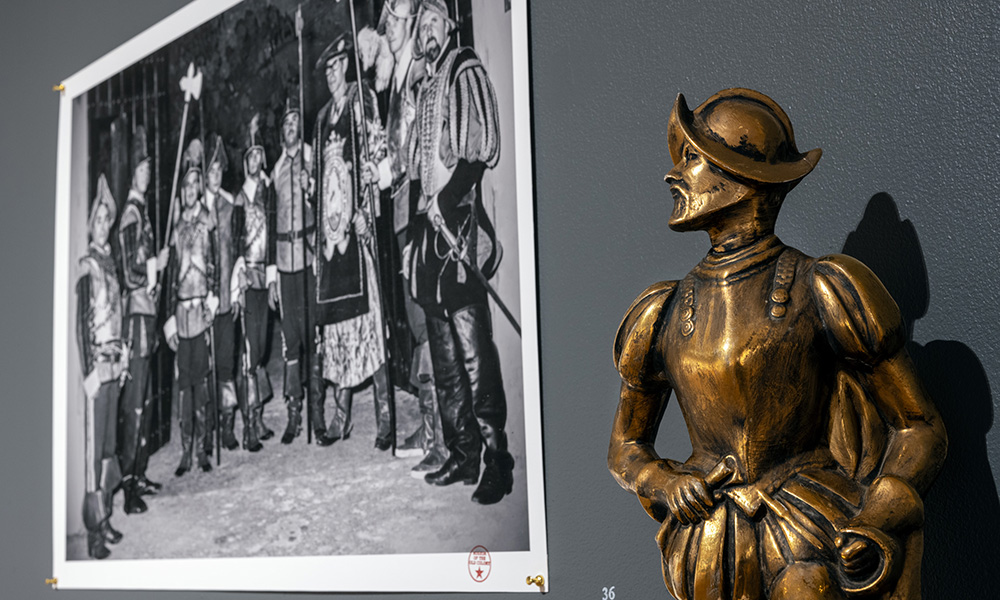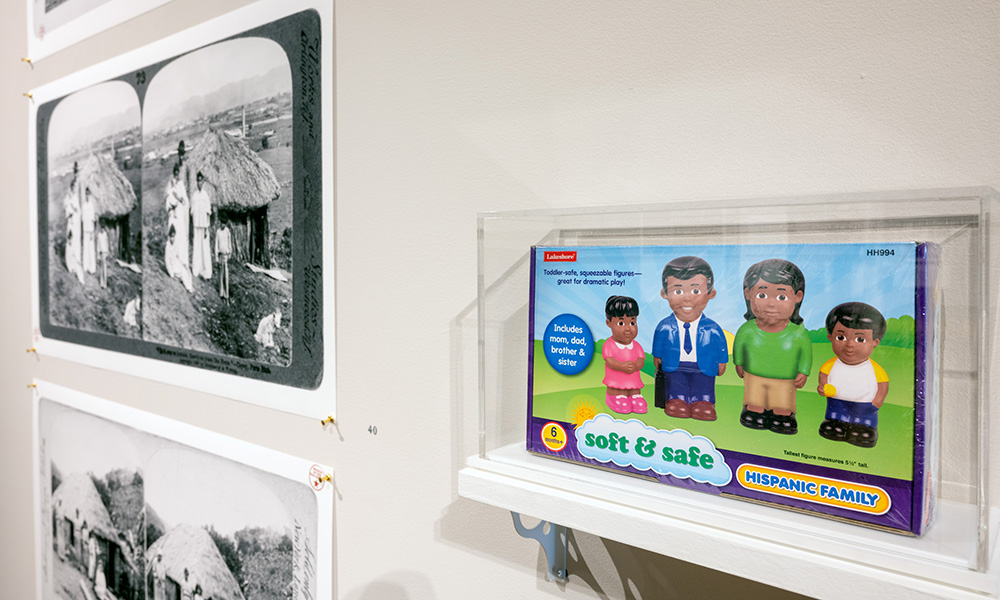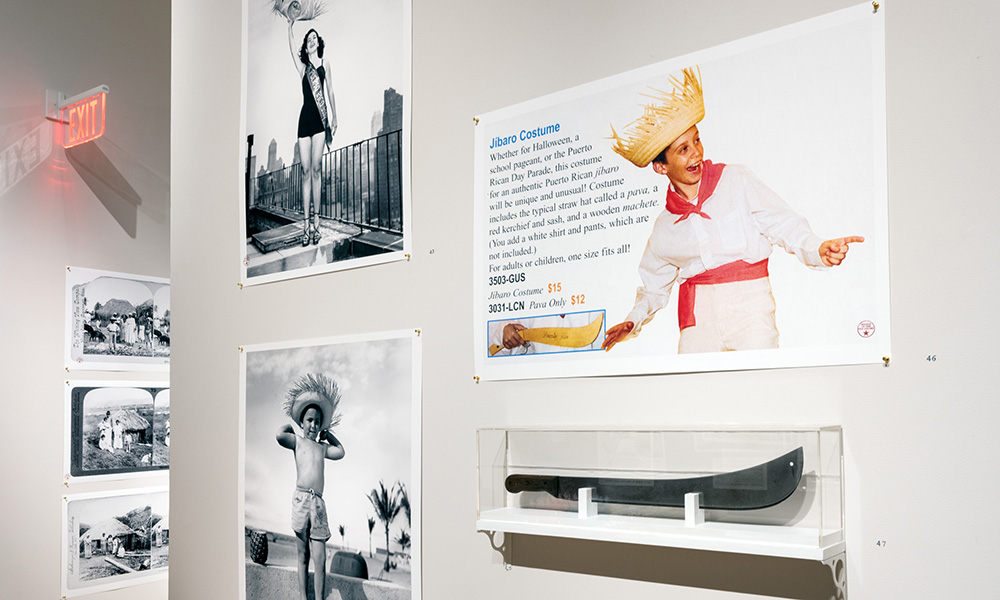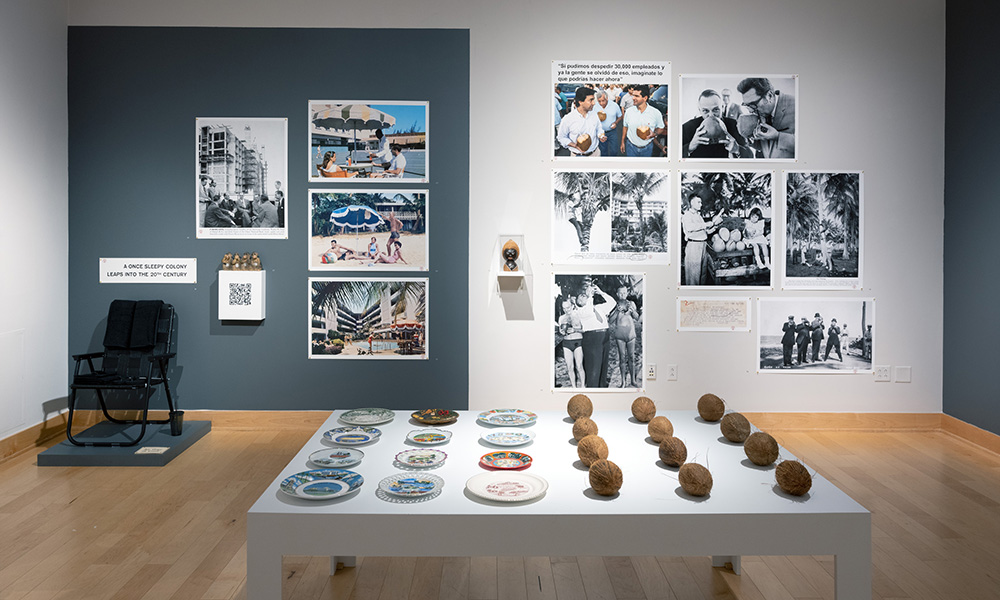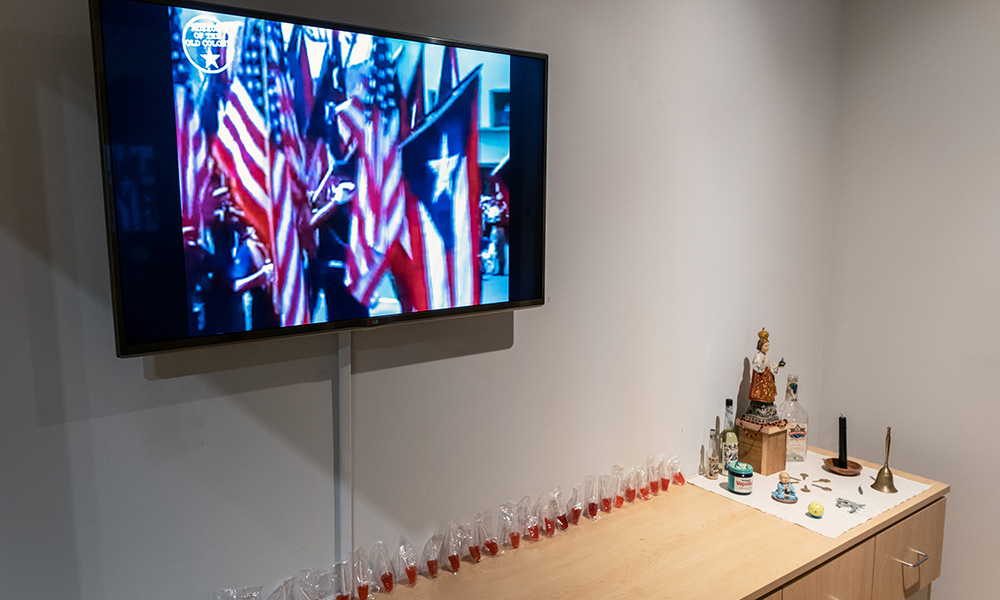

EVENTS
Opening Reception: Tuesday, Feb. 1, 5-7 pm. Duke Gallery Courtyard; artist talk by Pablo Delano at 5:30 p.m. with remarks by Dr. Laura Katzman, guest curator
Film Screening and Panel Discussion: Wednesday, Feb. 23, 5:30-8 p.m., Duke Gallery Courtyard
Cecilia Aldarondo’s highly-acclaimed film, Landfall, a documentary on the aftermath of Hurricane Maria in Puerto Rico. Panelists include: Taína Caragol, Smithsonian National Portrait Gallery; Nefin Dinc, SMAD/JMU; Ángel Garcia, Geology/JMU; Amanda Guzmán, Trinity College and Marianne Ramírez Aponte, Museum of Contemporary Art of Puerto Rico.
MEDIA
Ivette Romero, Repeating Islands (Dec. 11, 2021)
José A. Delgado, El Nuevo Día (Feb. 23, 2022)
Elizabeth Mirabal, SECAC Online Reviews (May 2022)
Elizabeth Mirabal, The Latinx Project (March 28, 2023)
Art Installation Explores the Legacies of Colonialism in Puerto Rico
The Museum of the Old Colony is an ongoing, site-specific, conceptual art installation by visual artist Pablo Delano (b. 1954) that addresses the complex history of his native Puerto Rico after the Spanish-American War of 1898, when the Caribbean archipelago was seized by the United States military from Spain as a "possession."
Appropriating archival photographs, film footage and popular artifacts that Delano collects and "curates" for his performative museum, the installation provocatively critiques the stereotypes and entrenched misperceptions of Puerto Rico disseminated in mainstream media over a century. The work thus speaks to the relationship between U.S. imperial power and the island-nation and to the lasting and devastating legacies of colonial rule. With dry wit and sardonic humor, The Museum of the Old Colony equally illuminates the power of images to inculcate cultural values and the authority of museums to confer meaning on the objects that such trusted institutions have acquired and displayed.
The Museum of the Old Colony at the Duke Gallery of Fine Art is the most extensive presentation of the exhibition to date. Earlier versions were presented in museums and alternative spaces across the continental U.S. as well as in Trinidad and Tobago, Jamaica, Argentina and Puerto Rico.
The Museum of the Old Colony lives in the permanent collection of the Museum of Contemporary Art of Puerto Rico | Museo de Arte Contemporáneo de Puerto Rico.
Artist Bio:
Pablo Delano was born, raised and educated in the “unincorporated” U.S. territory of Puerto Rico. He holds a B.F.A. from Tyler School of Art/Temple University and an M.F.A. from Yale University, both in painting. Living in New York in the early 1980s, he turned to photography, a skill he learned from his father, the eminent photographer Jack Delano. Pablo Delano’s work has consistently documented the lives, histories and struggles of Latino/a and Caribbean communities, in their homelands and in their diasporas. After a decade photographing in Trinidad and Tobago, his fascination with that nation’s process of post-colonial nation-building led to the production of his acclaimed book In Trinidad (2008). He has also authored Faces of America (1992) and Hartford Seen (2019). In 2019, Delano was appointed Charles A. Dana Professor of Fine Arts at Trinity College in Hartford, where he has taught since 1996.
Curator Bio:
Laura Katzman is professor of art history at James Madison University and a scholar of documentary photography on the U.S. continent and in Puerto Rico from the New Deal through the World War II eras. She curated Picturing Puerto Rico Under the American Flag: The Photographs of Louise Rosskam, 1937-1948 for the Hunter East Harlem Gallery in New York City. Katzman is author of Re-viewing Documentary: The Photographic Life of Louise Rosskam (2014) and is working on a book on photography in 1940s’ Puerto Rico (the early muñocista era). She is the editor of the forthcoming catalogue that will accompany The Museum of the Old Colony. Distributed by the University of Virginia Press, this volume includes essays by noted scholars, a foreword by Marianne Ramírez Aponte and an afterword by Beth Hinderliter.



